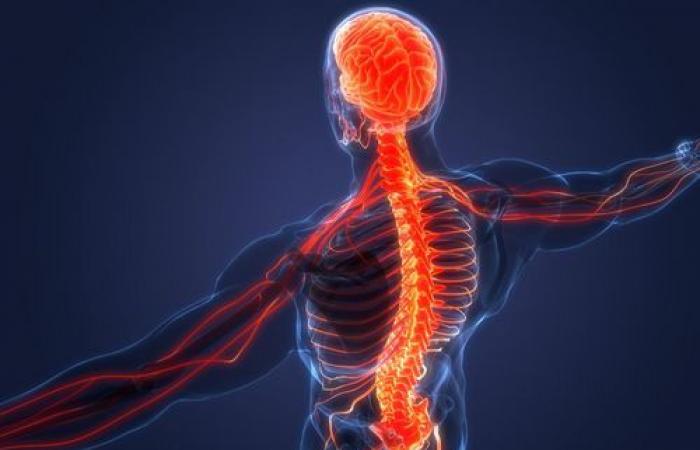Frédéric Charron and Rachelle Sauvé
Credit: IRCM
Understanding the complex mechanisms of nervous system development still contains many gray areas, which hinders the development of effective therapies to promote the regeneration of nerve connections following spinal cord injuries.
Work from the D teamr Frédéric Charron, director of the Molecular Biology of Neural Development Research Unit at the Montreal Clinical Research Institute and research professor in the Department of Medicine at the University of Montreal, recently published in the Journal of Neuroscience, highlight the fundamental role of a family of proteins, β-arrestins, in the development of the nervous system at the embryonic stage.
This progress was made possible thanks to the work carried out by doctoral student Rachelle Sauvé, in collaboration with Steves Morin, then a research assistant, and Dr.re Patricia Yam in the laboratory of Frédéric Charron.
“This new understanding opens up our perspectives to better explore the mechanisms that can lead to the regeneration of nerve connections following spinal cord injuries,” explains the researcher. And the more we dismantle these mechanisms, the more we will be able to act to correct the after-effects resulting from these lesions.”
The role of proteins in axonal guidance
As embryos develop, neurons extend their axon, a long cellular cable that allows them to connect specific areas of the body together, thus establishing nerve connections.
The set of processes that govern the elongation of the axon and direct its navigation is called “axon guidance”. Among other things, axonal guidance connects each neuron to its specific target. It is therefore crucial for the proper development of the nervous system. Various so-called guidance molecules, such as Sonic hedgehog, direct axons towards their targets like signal signs directing axons towards their destination. However, the perception of these guidance molecules by axons requires a complex molecular machinery which has not yet revealed all its mysteries.
Frédéric Charron’s team demonstrated, for the first time, that β-arrestin proteins serve as adapters between the Smo and SFK proteins, two essential components of axonal guidance. Like an electronic adapter without which it would be impossible to plug your phone into a power outlet, the β-arrestin proteins allow the Smo and SFK proteins to interact with each other. Thus, β-arrestins are essential for axonal guidance.
About the study
The article “β-arrestins are scaffolding proteins required for Shh-mediated axon guidance”, by Rachelle Sauvé and colleagues, was published in the Journal of Neuroscience le June 17, 2024.
This study was made possible thanks to the support of the Canadian Institutes of Health Research, the Canada Foundation for Innovation, the Fonds de recherche du Québec – Santé sector and the Canada Research Chairs Program.






